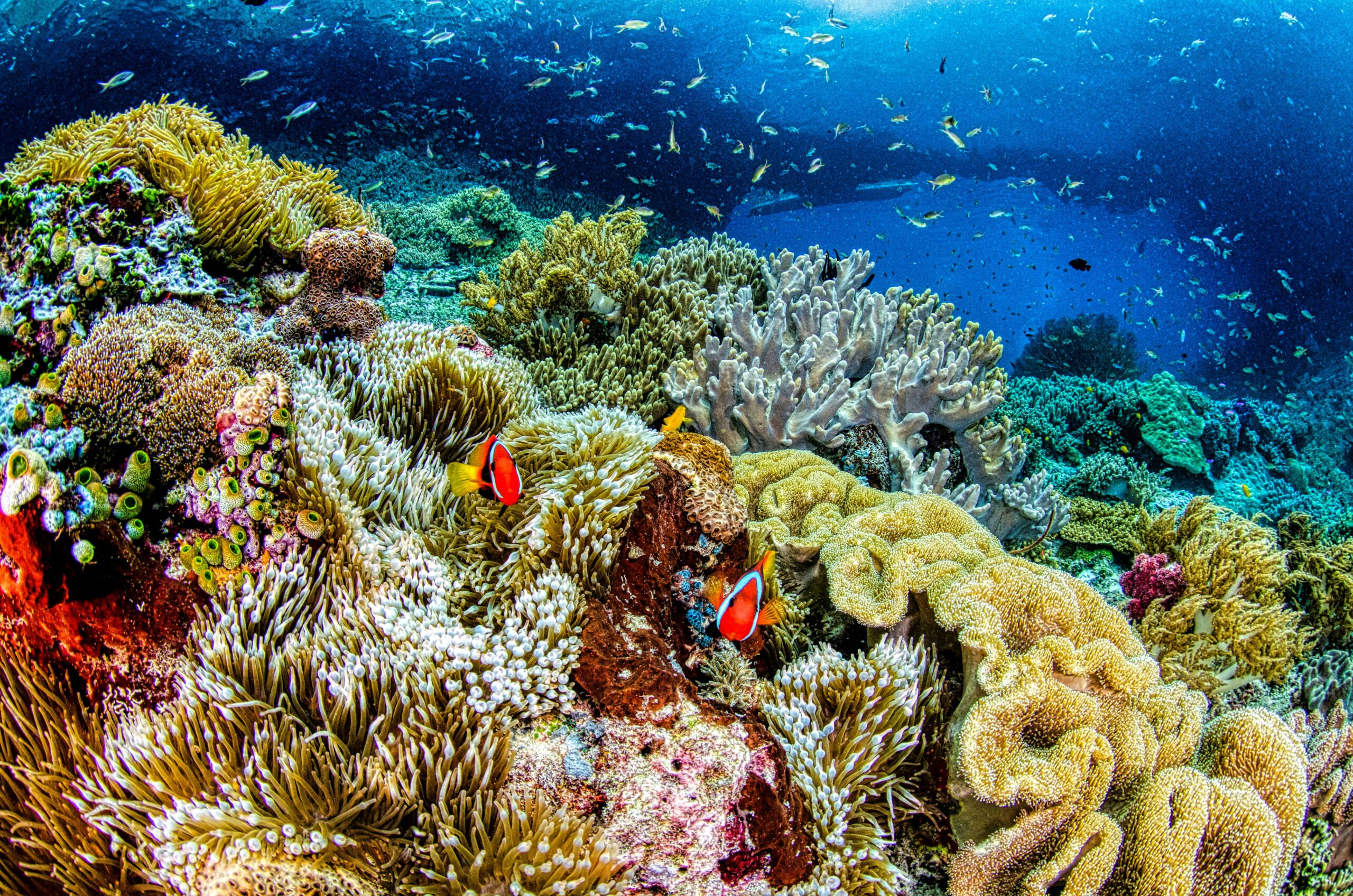
Did you know that there are more than 179 types of corals down there? The Andaman sea is no less than an awesome underwater garden that attracts divers and snorkelers from all over the world.
Gearing up for Scuba Diving in Andaman Islands? Diving into a living, breathing coral reef is like entering an underwater wonderland where every turn has a breathtaking view. Pink here, purple here, and red right behind you, something like that!
Just a reminder, keep the jaw-dropping moments for the surface, those regulators aren’t great at catching dropped jaws!
Read More: Marine Life to Witness while Scuba Diving in Andamans
Why are Corals Important? – Underwater Fish City!
Guess what? These corals aren’t just aesthetic things, they play a massive role in the biodiversity of this incredible place.
Have you ever thought about how important corals are in the ocean? They’re creating these lively underwater cities that house all sorts of marine creatures. They are the superheroes, guarding coastlines from storms and erosion. Corals are also like a medicine cabinet in the sea, hosting potential cures for diseases. So they are as important under the water, as they are above. They bring culture and beauty to coastal communities and are an important part of their lives.
Top Coral Spotting Sites in the Andamans
Most Common Corals Found in the Andaman
1. Acropora a.k.a Table Corals
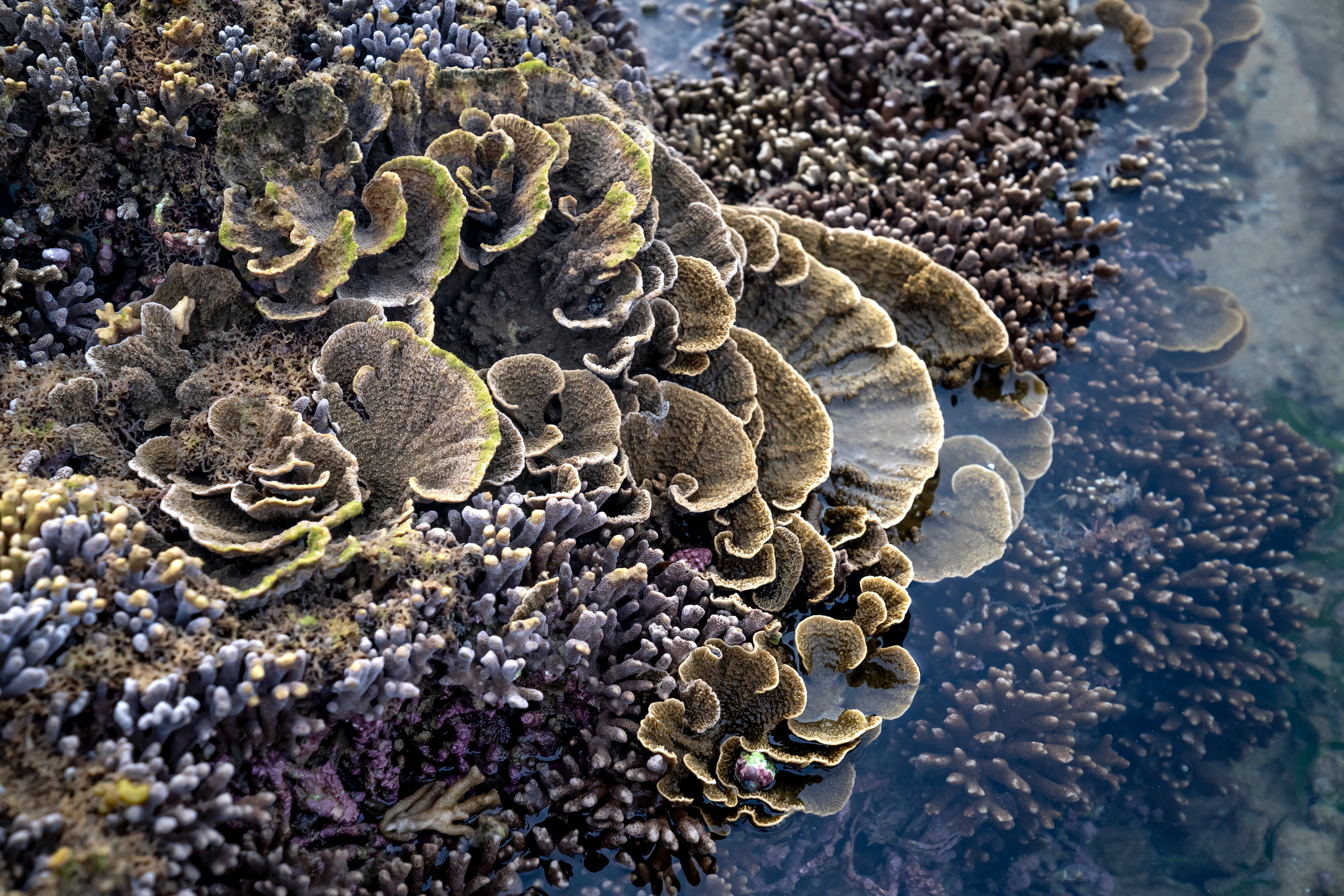
Acropora is a hard coral type known for its branching structures and vibrant colors, crucial for coral reef formation. These corals, also called “staghorn” or “table” corals, play a vital role in reef ecosystems by providing shelter and support for many marine lives. Vulnerable to environmental changes, they are often found in shallow waters and contribute significantly to the reef structure. So basically, the reef watchdogs, aren’t they?
2. Montipora a.k.a Pore Corals
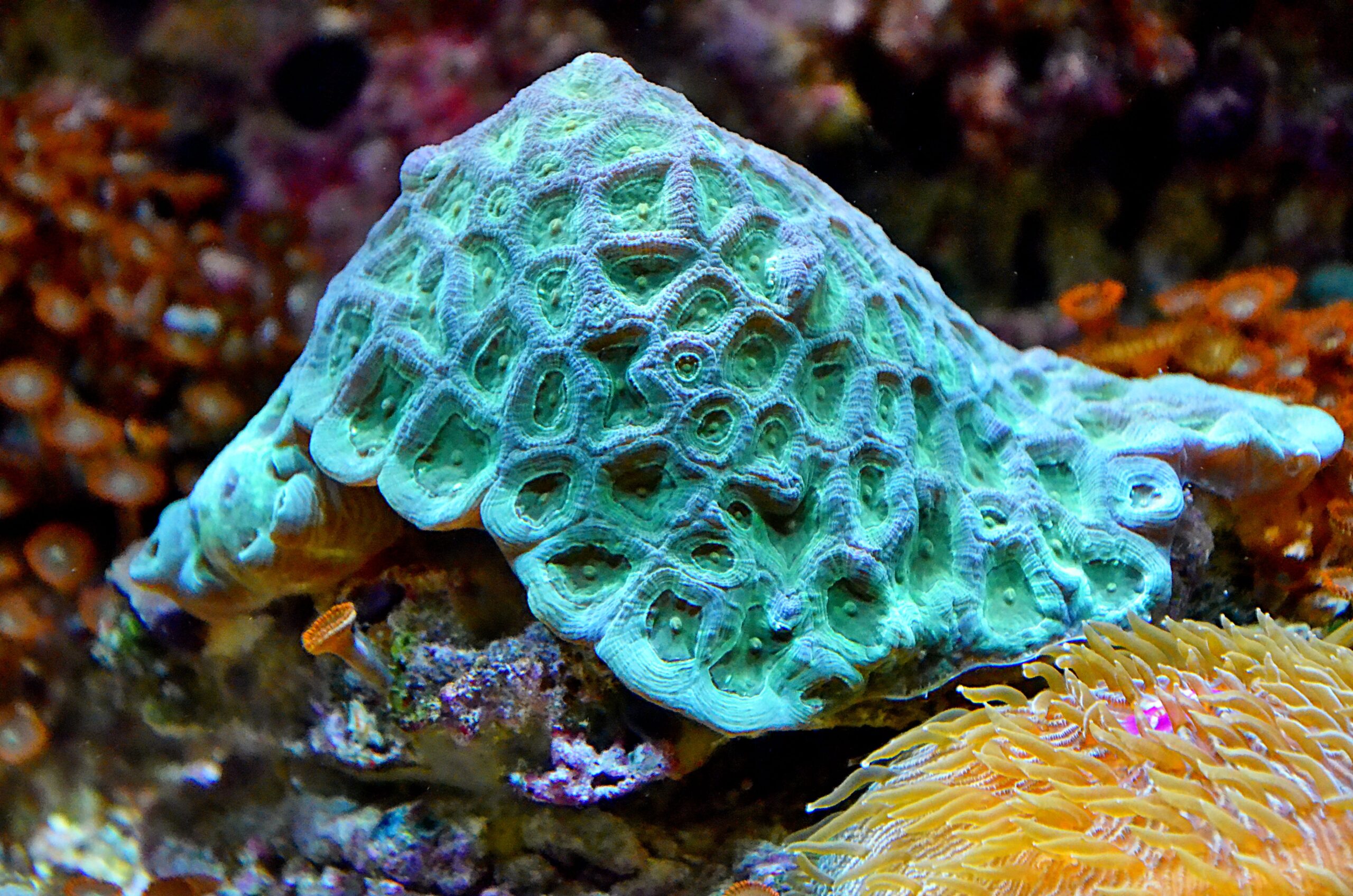
Montipora is a diverse type of hard coral found in Andaman coral reefs, known for its varied growth forms and vibrant colors. They are adaptable to different light conditions and can be found in both shallow and deeper waters. Conservation efforts are important to safeguard Montipora and maintain the health of coral reefs.
3. Pocillopora a.k.a. Cauliflower Corals
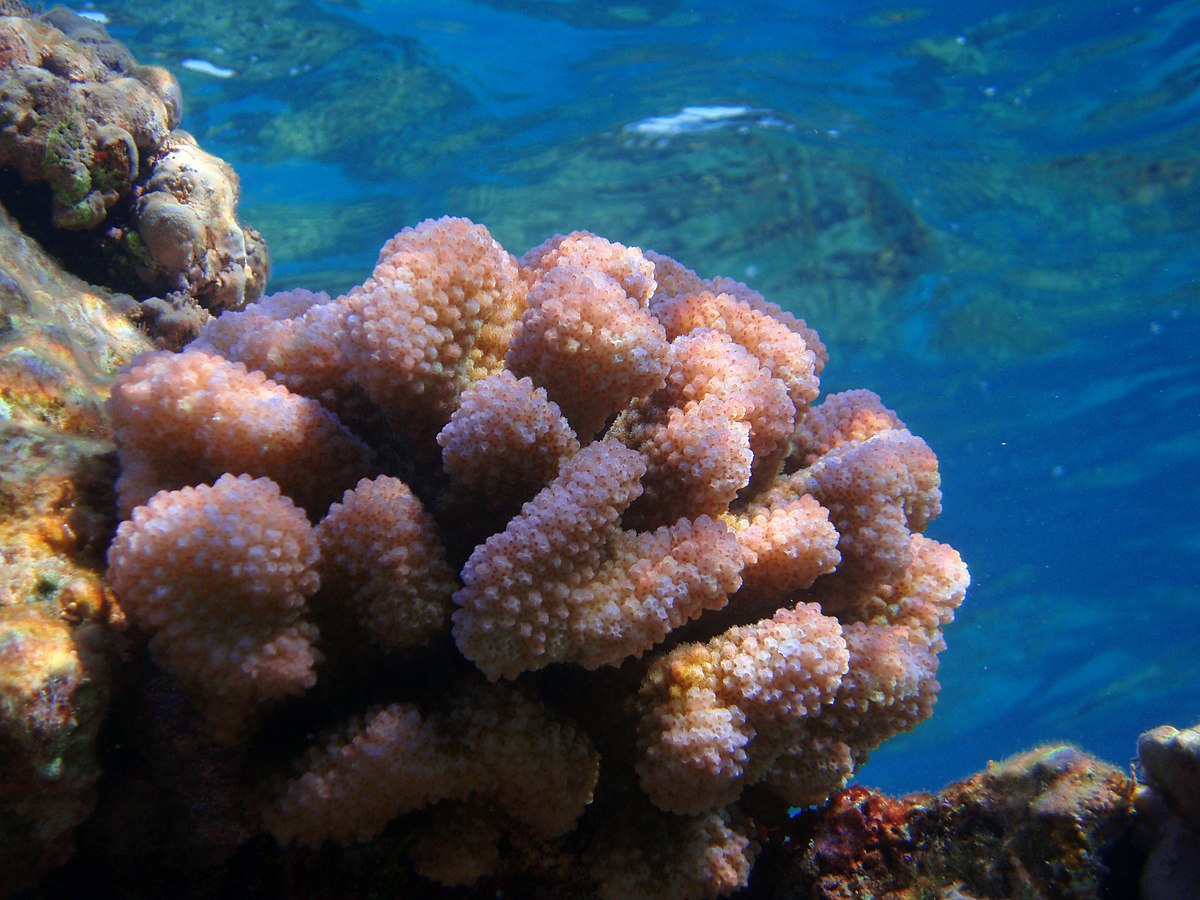
Love Gobhi? Don’t mistaken Pocillopora for one tho. Pocillopora is commonly called cauliflower corals and brush corals, a group of hard corals prevalent in coral reef environments, The colonies can be dome-shaped or branching and are very variable in color and shape depending on the species and the environmental conditions. These colonies are integral to coral reefs, adding structural complexity and serving as vital habitats for many marine species. Like many corals, it is vulnerable to environmental changes, highlighting the need for conservation to protect these vital contributors to reef ecosystems.
4. Porites a.k.a. Finger Corals
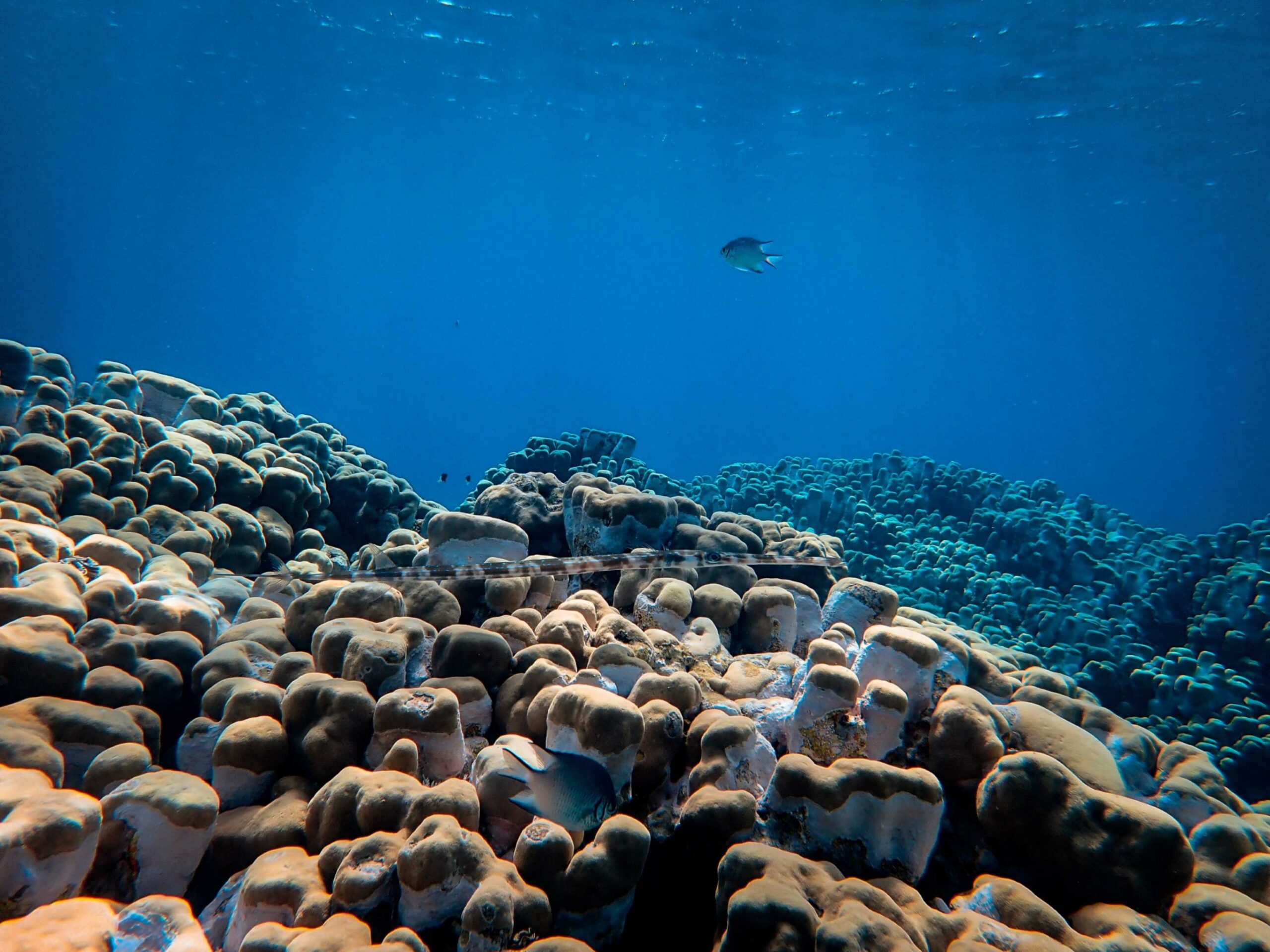
Porites, commonly known as finger corals from the family of hard corals in marine environments, stand out for their massive, rock-like colonies, playing an important role in coral reef ecosystems. Renowned as strong reef-builders, Porites corals provide essential structural support, improving biodiversity in Andaman marine ecosystems. Their colonies form with various colors, contributing to the richness of Andaman coral reefs. They are hardy and can thrive in various reef environments.
5. Goniopora a.k.a. Flower Corals
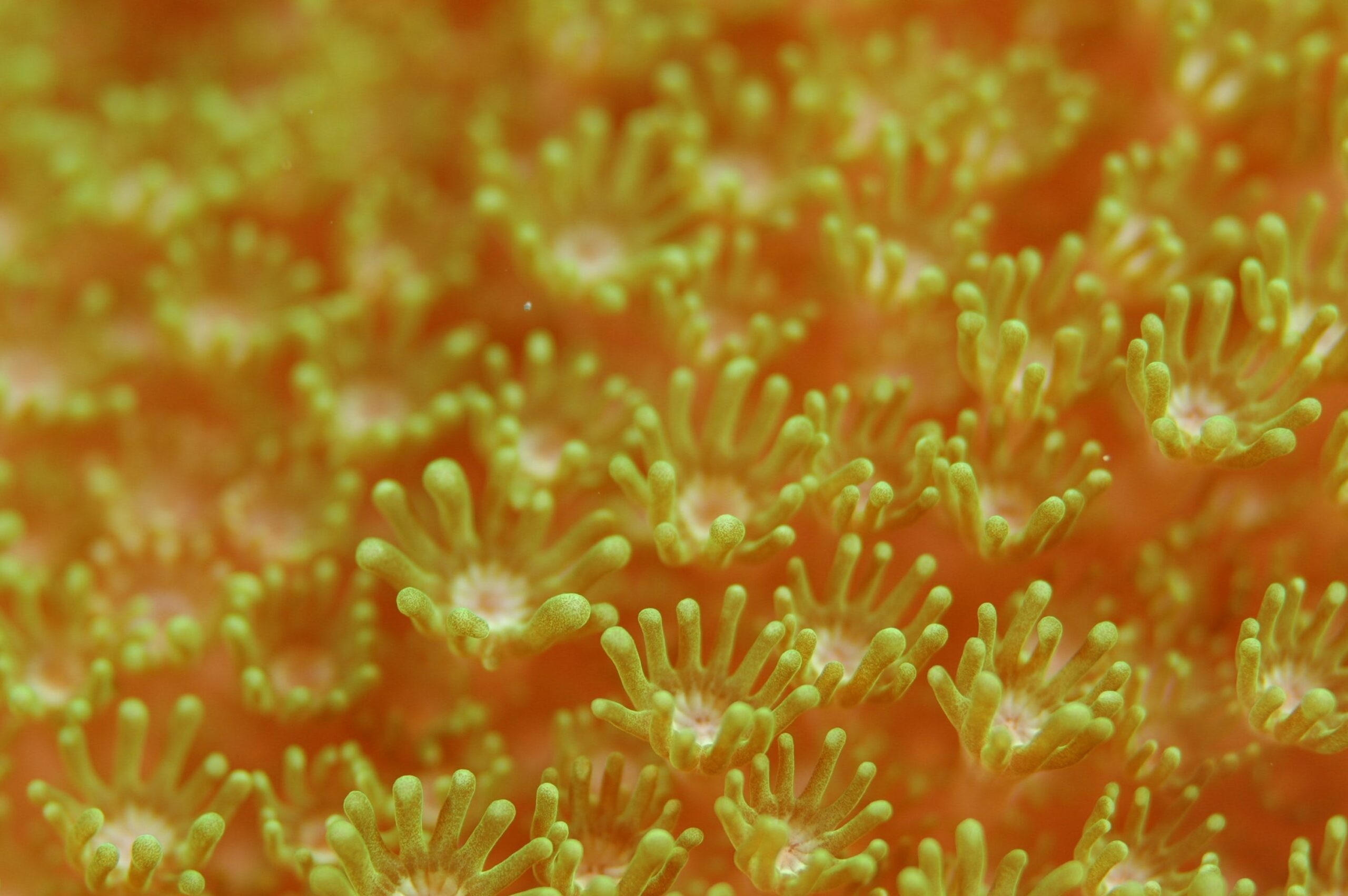
Goniopora is a genus of reef-building hard corals known for their distinctive flower-like appearance. These corals have numerous polyps arranged in a circular pattern, resembling of flower bouquets. Goniopora colonies come in a variety of colors and add beautiful diversity to coral reef ecosystems. They play a vital role in supporting marine biodiversity by providing habitats for various organisms. However, Goniopora corals are sensitive to changes in environmental conditions, and conservation efforts are essential to ensure their continued well-being and the health of the coral reefs where they thrive.
6. Favia a.k.a. Brain Coral
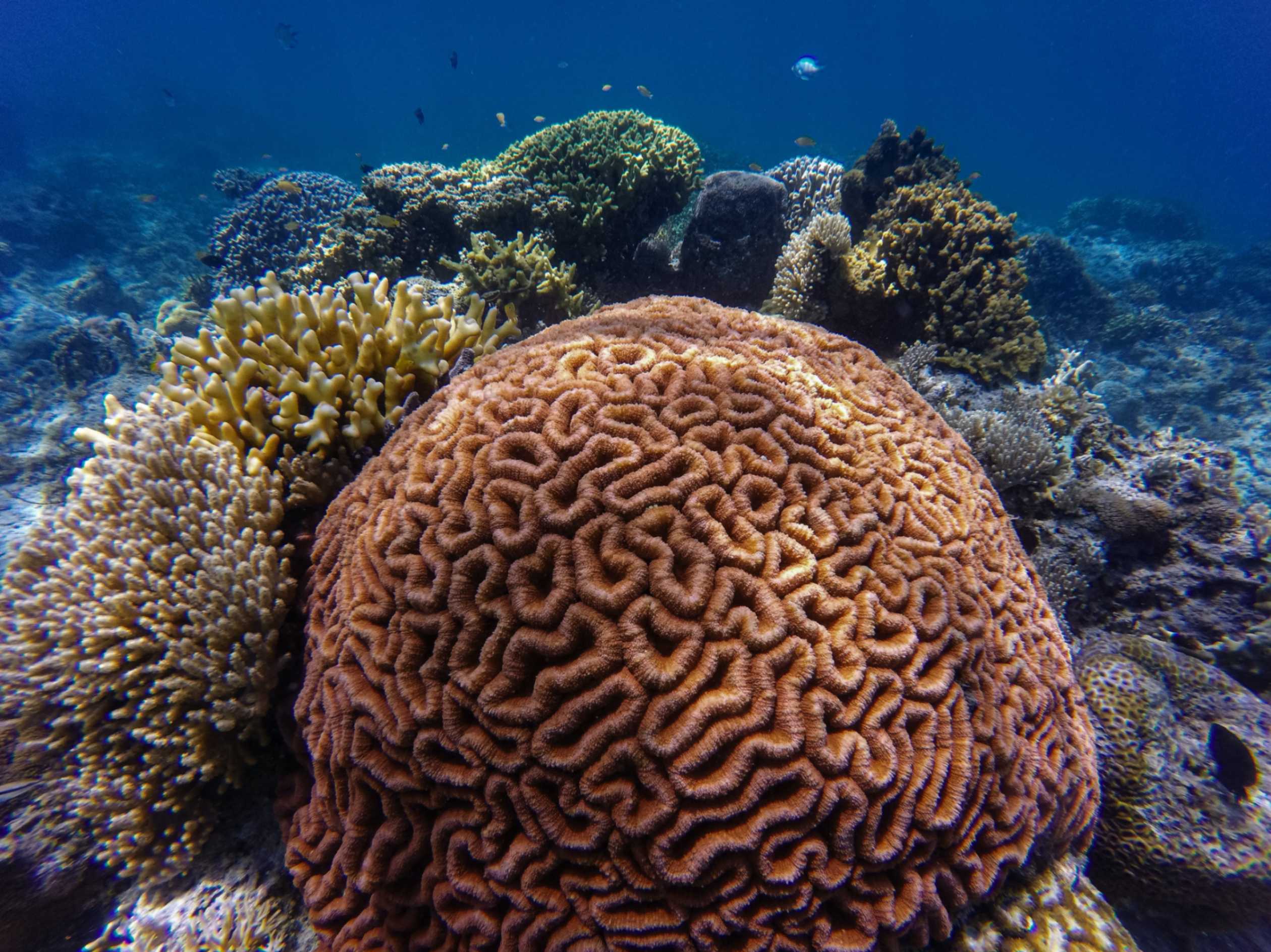
Favia, a genus of hard corals widespread in coral reef environments, is often called as “brain-corals” for its rocky, dome-shaped colonies and typical surface patterns resembling a brain’s texture. They are mostly found in shallow waters and provide habitat for various marine organisms. Favia corals, are generally tough but vulnerable to bad environmental conditions.
Leave World War I or II, it’s time for the Coral Wars! Yes, you read that right. Coral War.
Favia, in order to safeguard their population and territory, use small tentacles to sweep the water to see if any other coral is in its area, if so, then they begin to sting the other coral. This is commonly known as the coral war. Each coral is trying to make sure it has enough room around it so it can continue to grow and have more surface area for its offspring.
7. Fungia a.k.a. Mushroom Corals

Fungia, classified as a genus of solitary, free-living corals, is commonly referred to as “plate corals” or “mushroom corals.” Distinguished from traditional reef-building corals, Fungia species exist as individual polyps capable of movement and detachment. These corals typically exhibit a flat, disc-shaped morphology and display a spectrum of colors. Thriving in tropical marine environments, especially on sandy or muddy substrates, Fungia corals are recognized for their unique ability to inflate and deflate, enabling them to move across the ocean floor. While displaying flexibility, Fungia corals, similar to various coral species, confront threats from environmental changes, underscoring the necessity of conservation endeavors to preserve their distinctive ecological role.
8. Milliepora a.k.a. Fire Corals
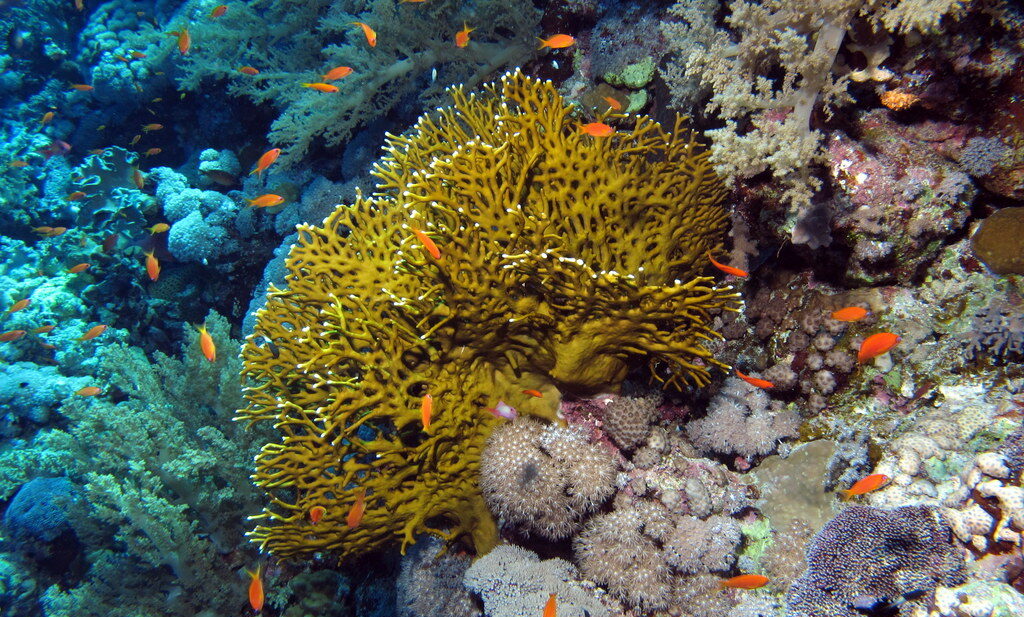
The Corals surely know their way out. These Fire Corals also known as Millepora have a calcareous skeleton, characterized as hydrozoans rather than true corals. These corals are known for their stinging cells, capable of irritation upon contact. Typically inhabiting shallow waters in tropical marine environments, Millepora often adopts branching or encrusting growth forms. Despite their hydrozoan classification, Millepora plays a significant role in reef-building communities, sharing common threats with other coral species. This includes susceptibility to environmental changes such as rising sea temperatures, pollution, and habitat degradation.
9. Alcyonacea a.k.a. Sea Whips
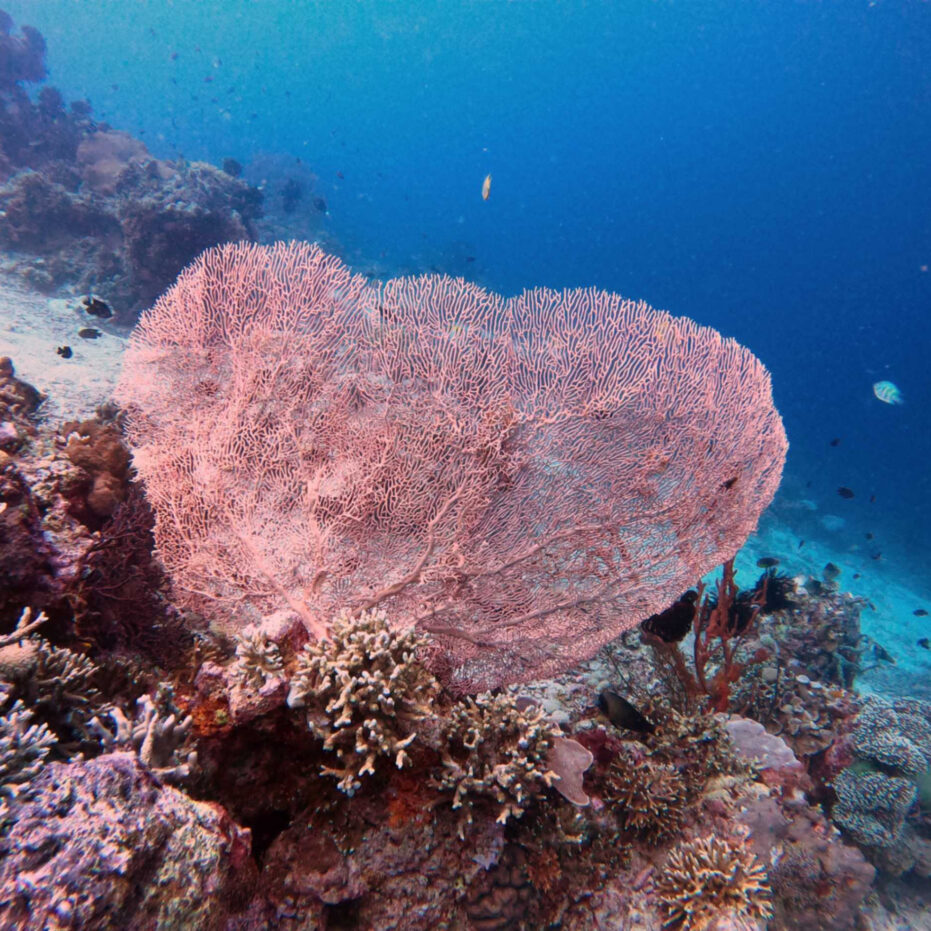
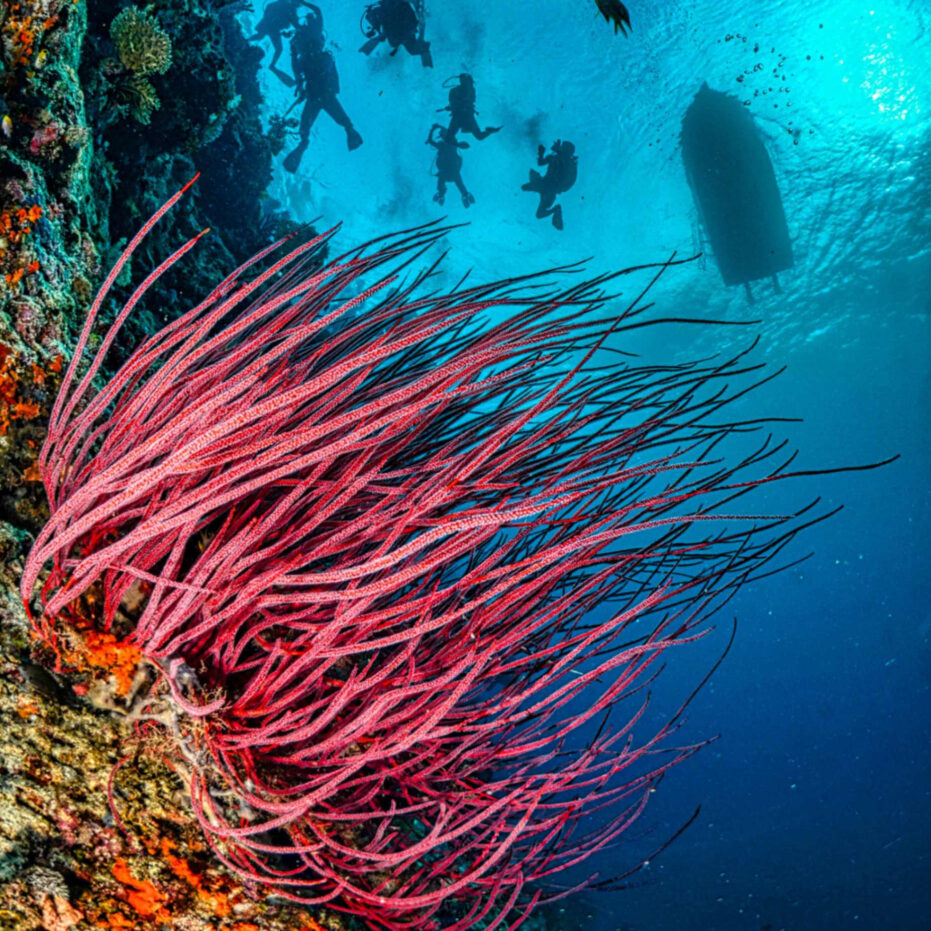
Alcyonacea is a genus of Soft corals, encompassing diverse forms within the order, like sea fans and sea whips, which are widespread in the Andaman Sea. These marine organisms contribute to the attraction of the underwater environment through their elaborate branching structures. Though not confined to a single species, the Alcyonacea is a variety of soft corals that collectively enhance the visual richness of the Andaman Sea.
10. Sarcophyton a.k.a. Leather Corals
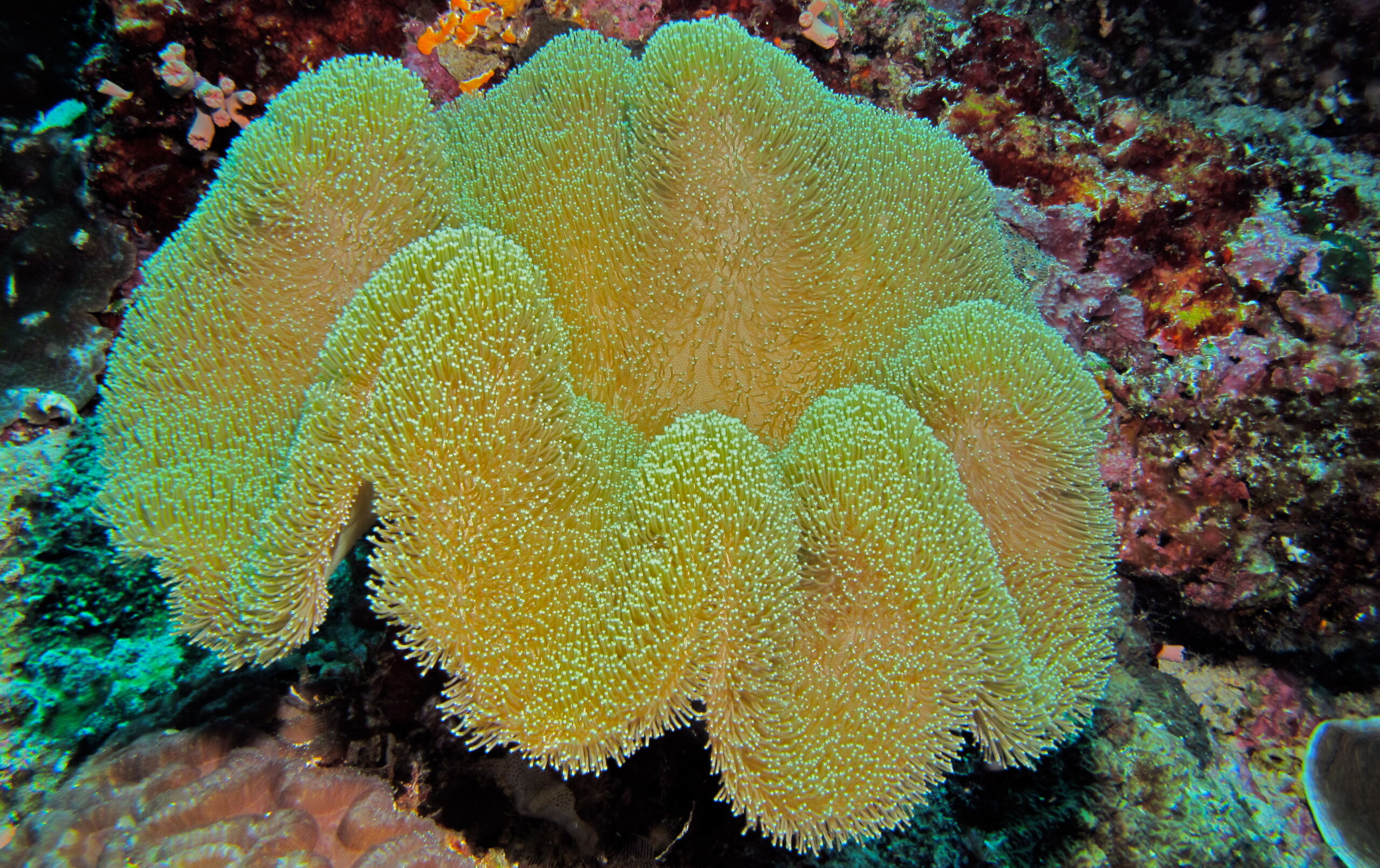
Sarcophyton is a genus of soft corals, commonly known as “leather corals,” found in tropical marine environments, including the Andaman Sea. These corals are characterized by their fleshy, leathery appearance and lack of a hard exoskeleton. Sarcophyton species exhibit various colors and unique polyp arrangements. Popular in Andaman coral reefs for their interesting shapes, they contribute to coral reef biodiversity and add visual attraction to underwater ecosystems.
Here are some tips for you to do your part in coral preservation
Sadly, Corals are facing some tough times, so we’ve got to be their allies in conservation. Let’s contribute to keeping corals alive for the sake of the ocean and all its incredible residents! It’s small stuff, but it adds up.
- Avoid touching or stepping on coral reefs while snorkeling or diving.
- Bring back the debris to the surface that you notice while diving.
- Use reef-safe sunscreen to minimize chemical damage to the coral.
- Contribute to efforts that address climate change, such as rising sea temperatures and ocean acidification threaten coral reefs.
- Stop using plastic products near coastal areas.
- Reduce energy consumption and adopt eco-friendly practices.
- Contribute to or volunteer with organizations working to protect and restore coral reefs.
Customer Happiness
Secure Payments
No Hidden Costs
Fast Confirmations
Stay updated with all the excitement that Andamans has to offer

If you have a flair for writing, write for us and get featured.
Get lost or never. You decide. Download our handy tour guides to plan your trip.